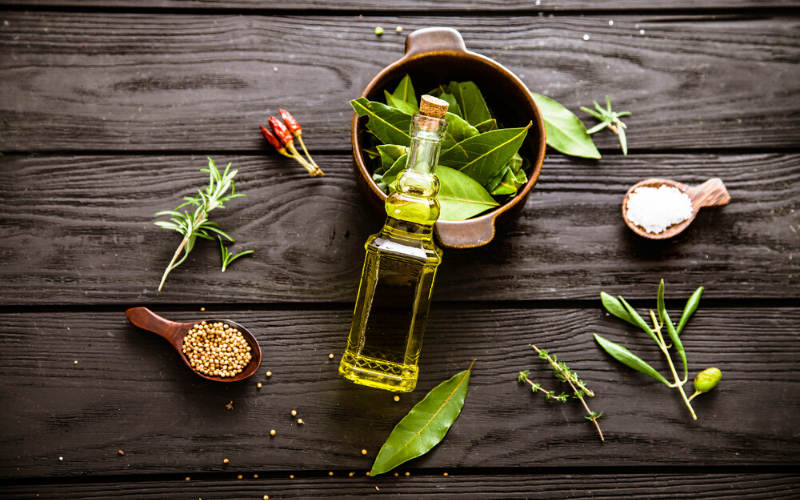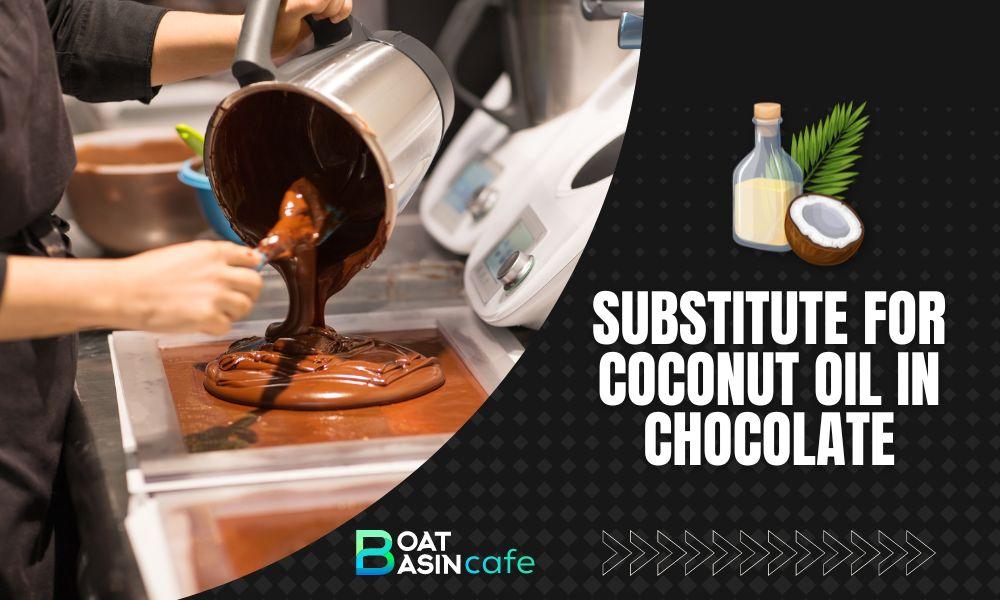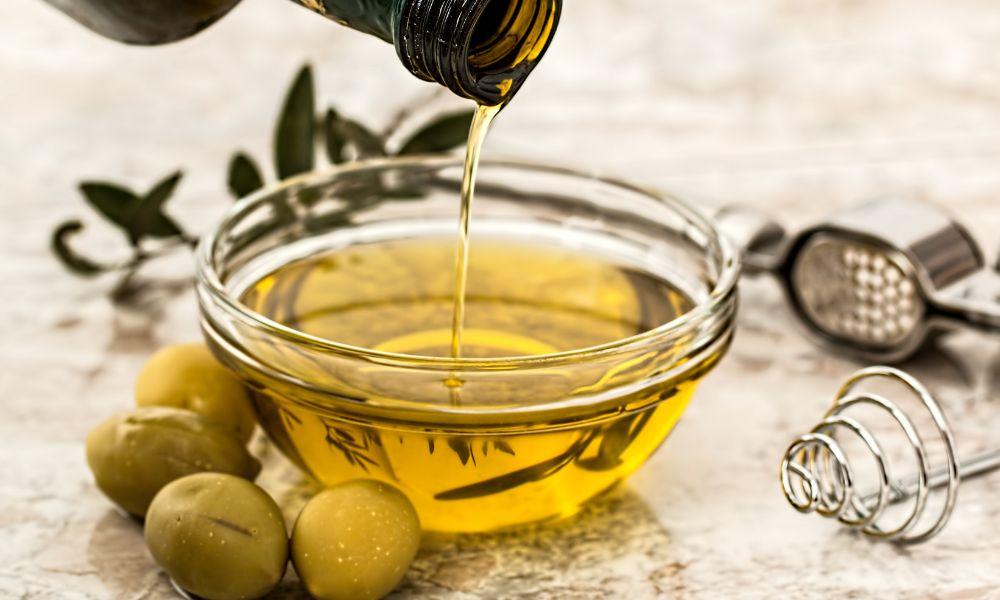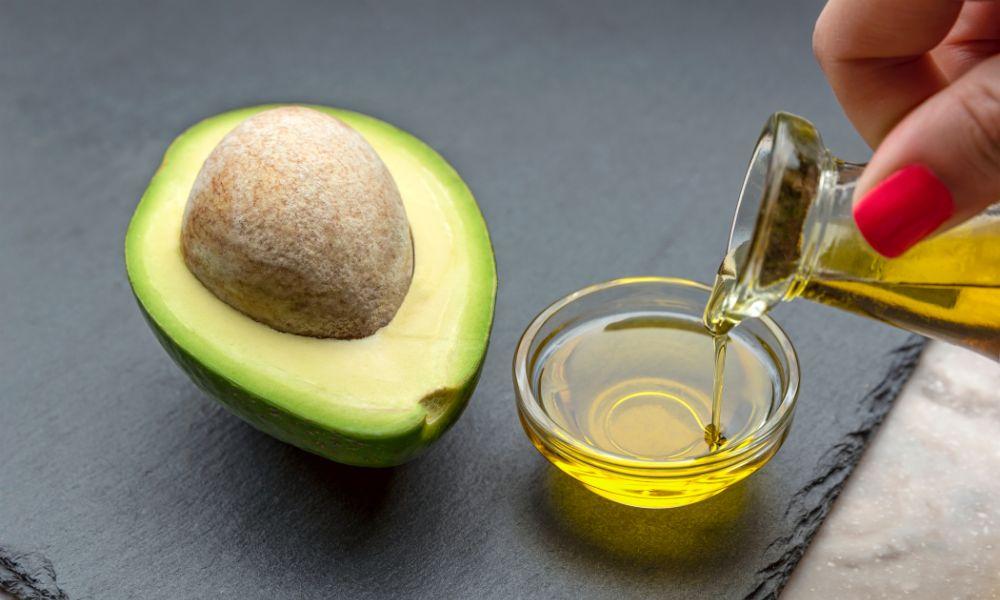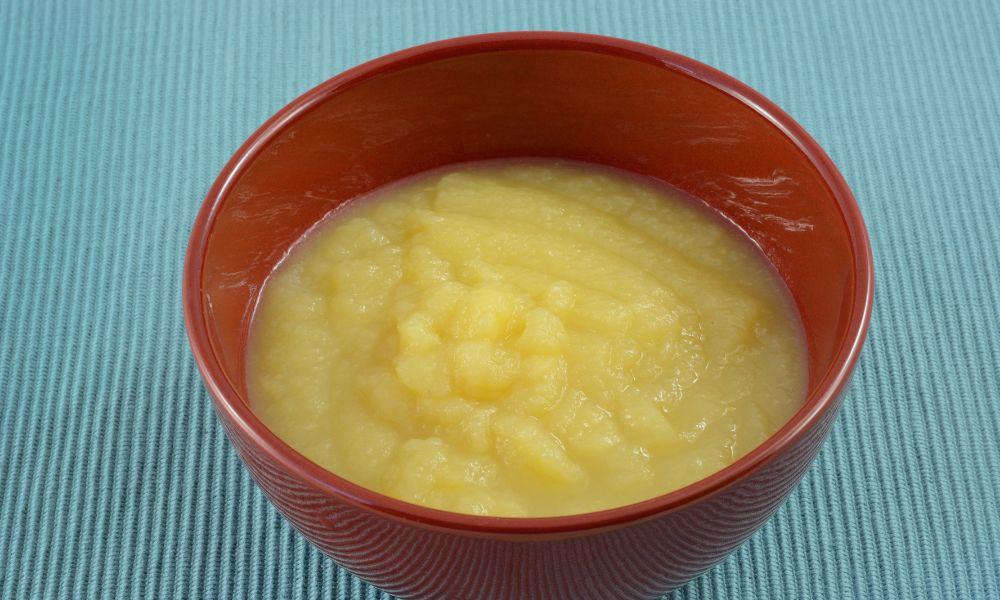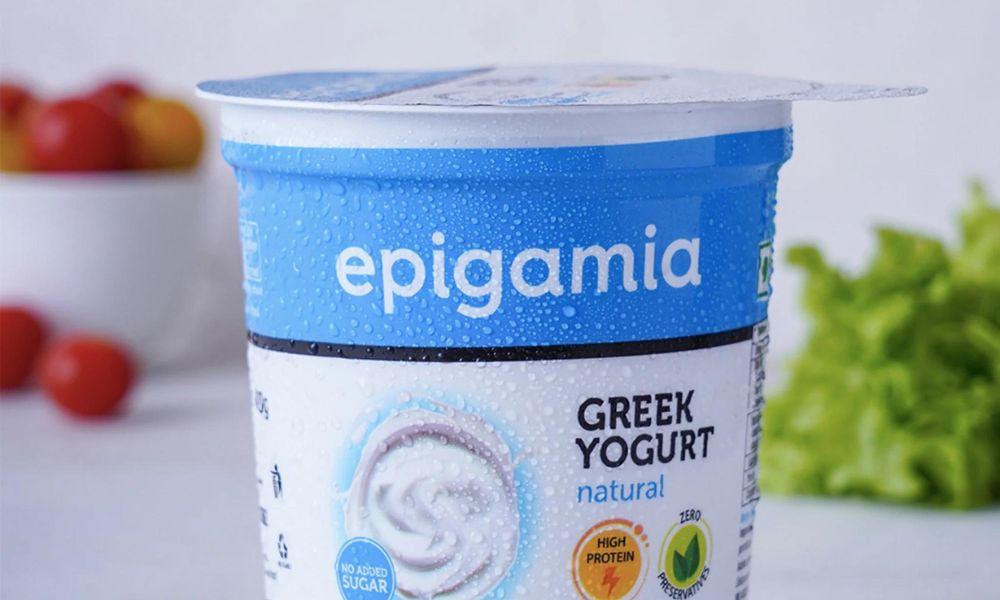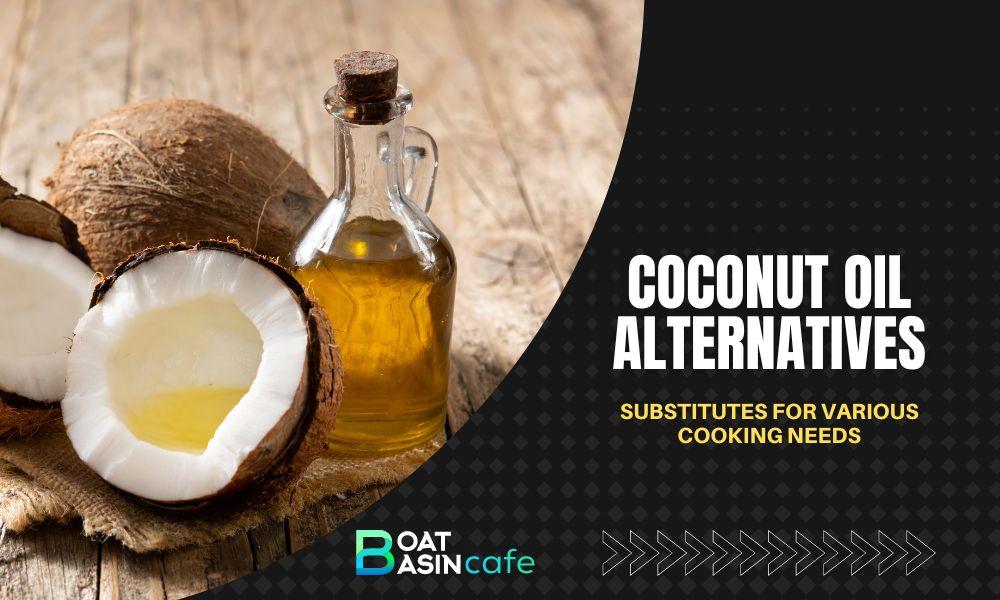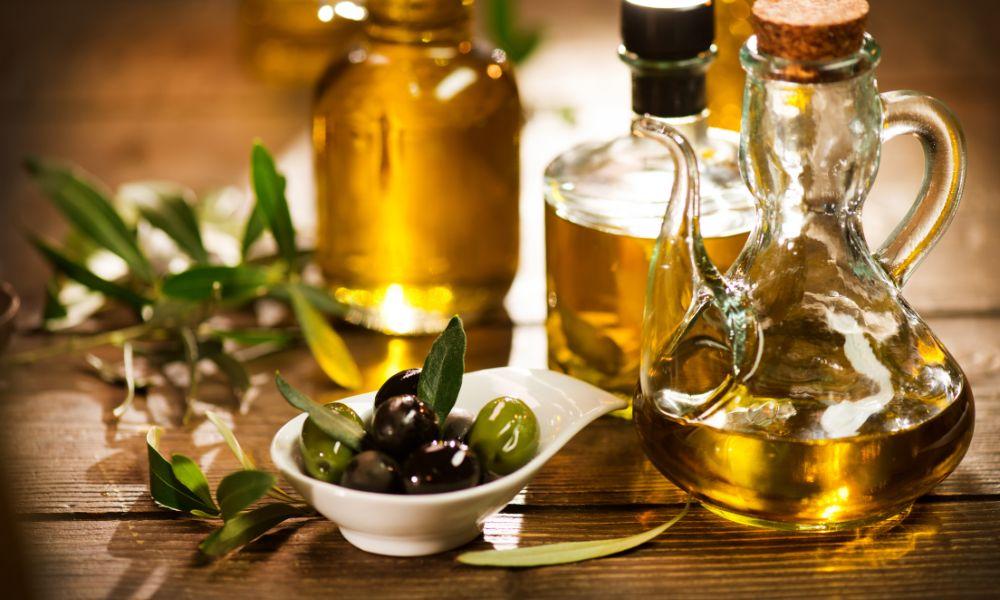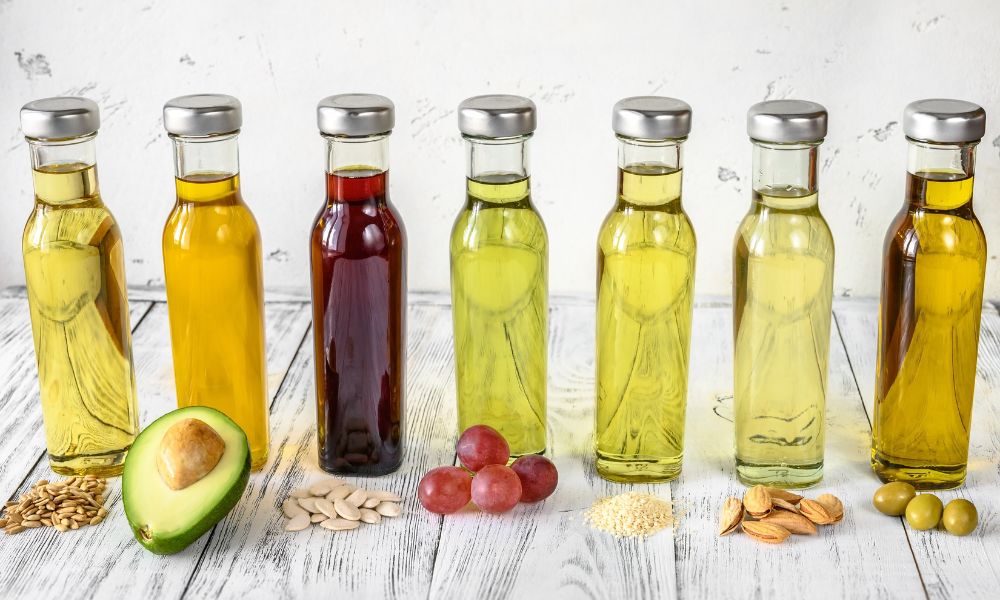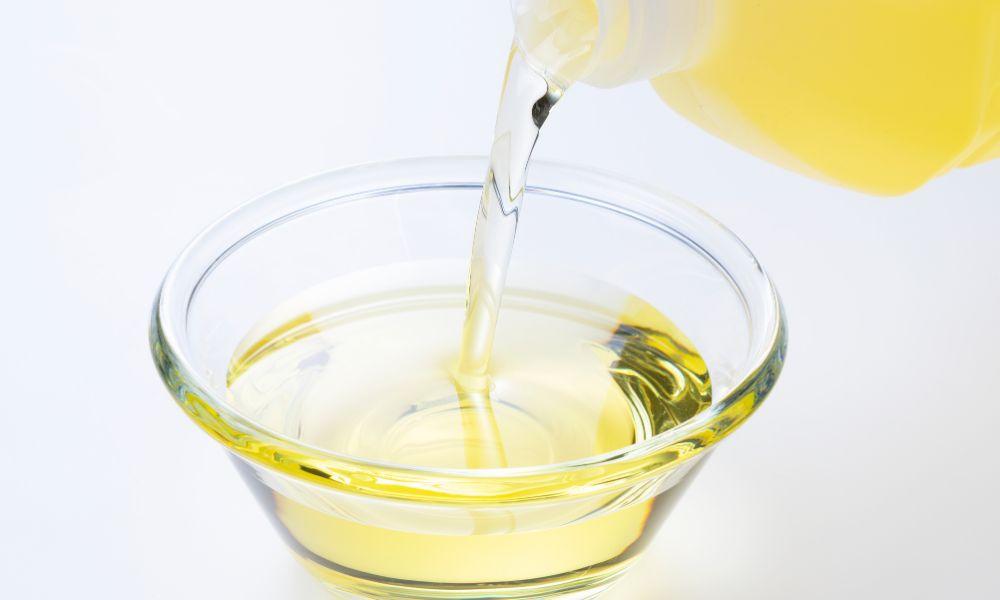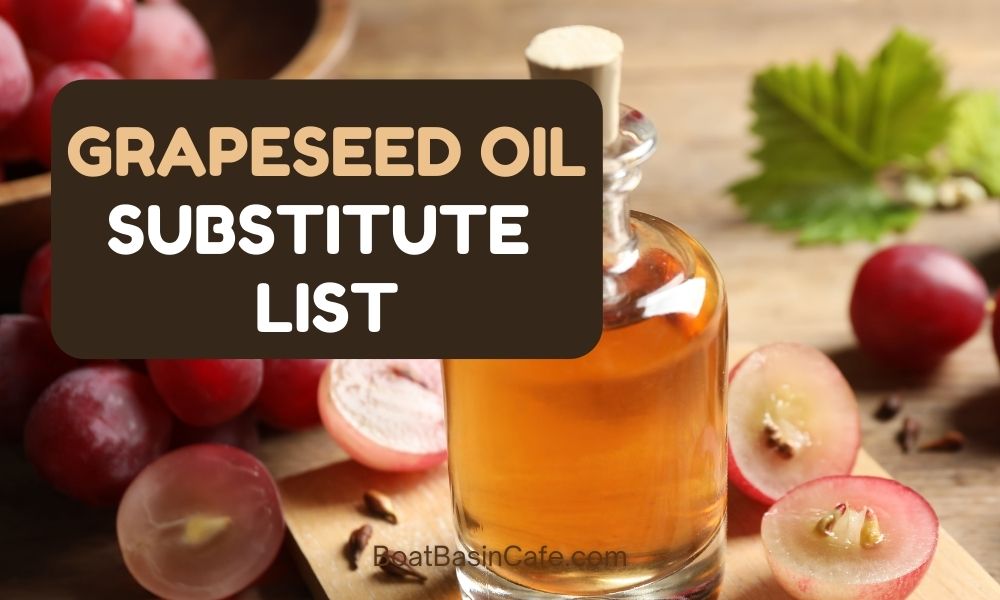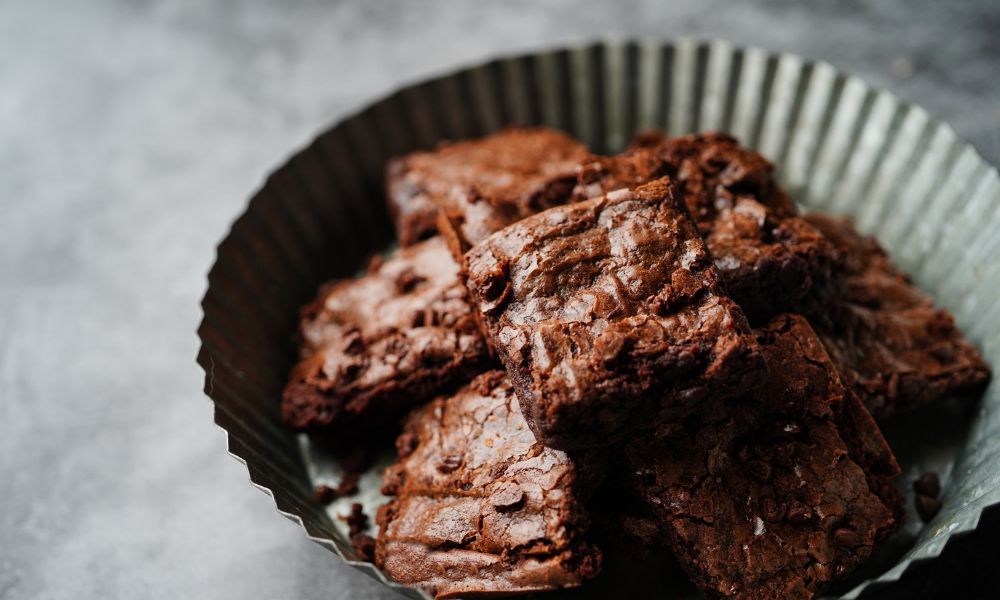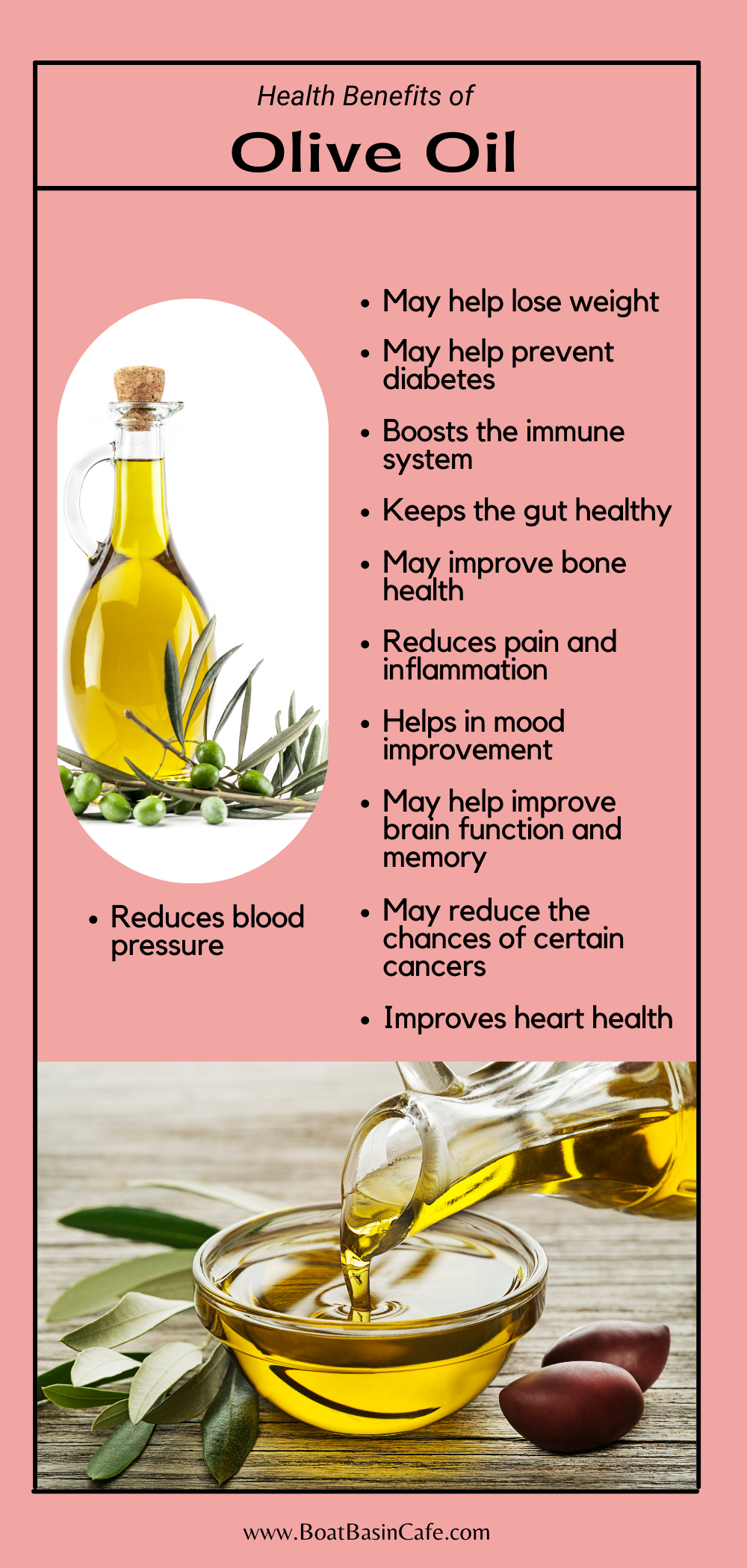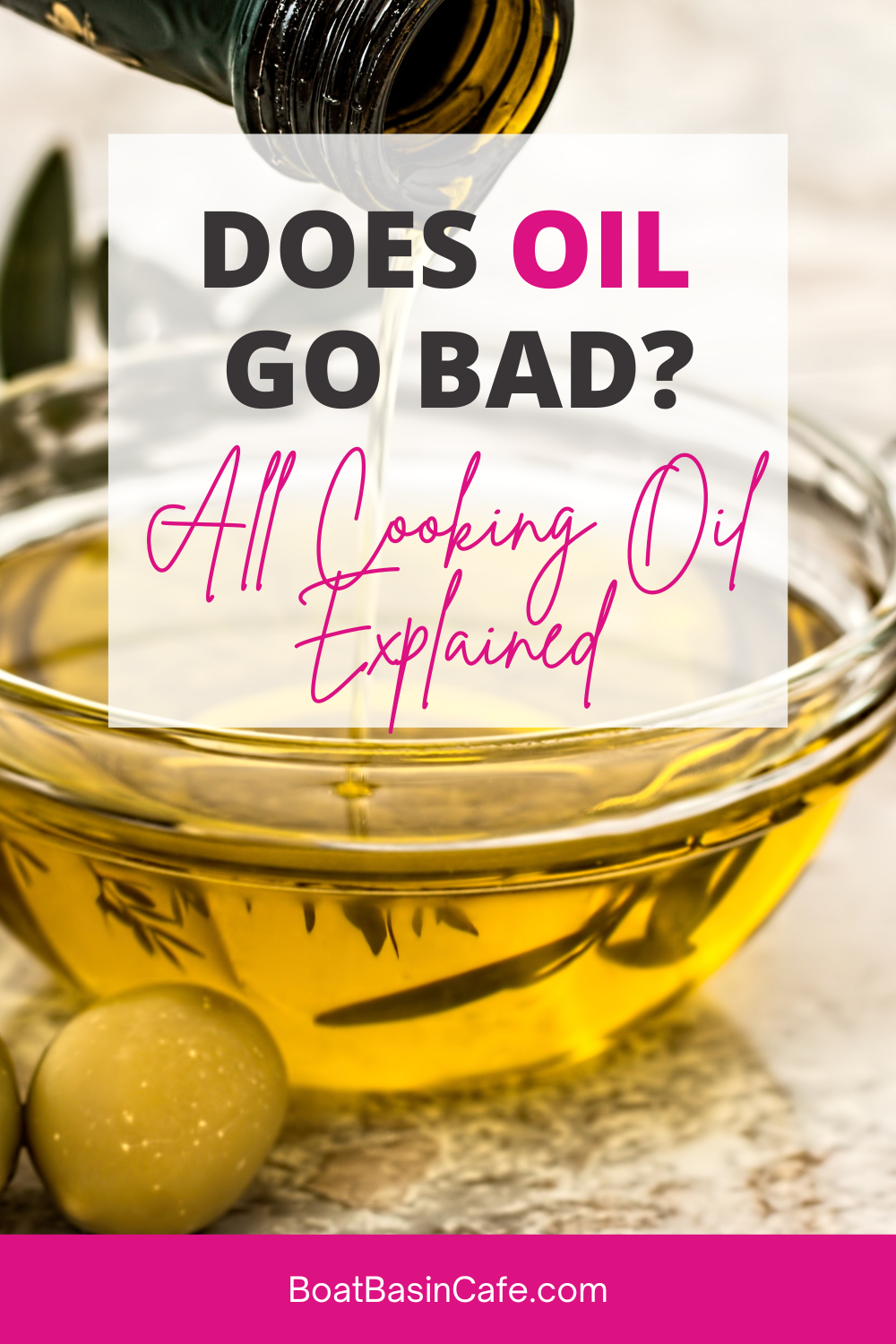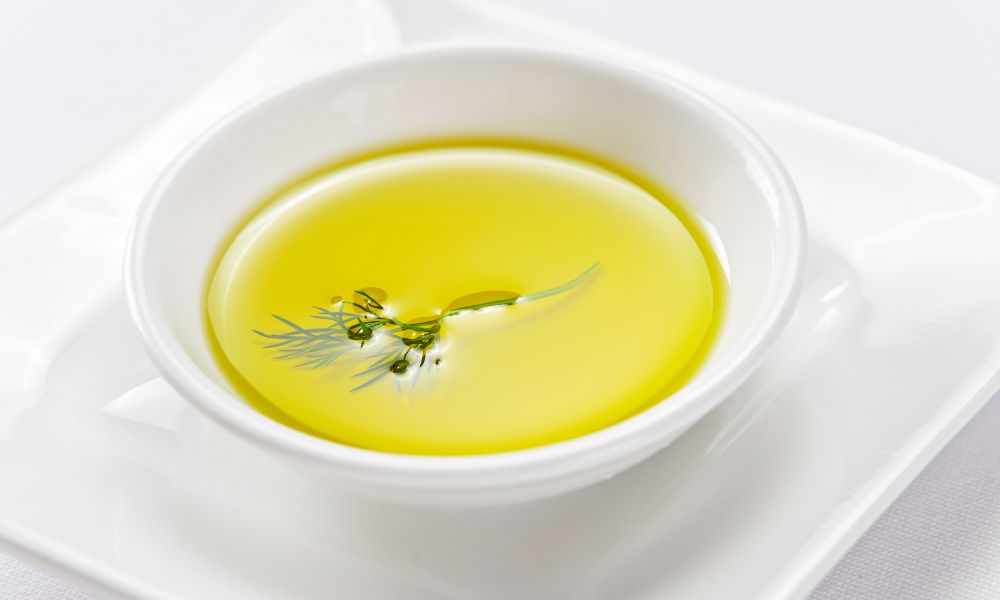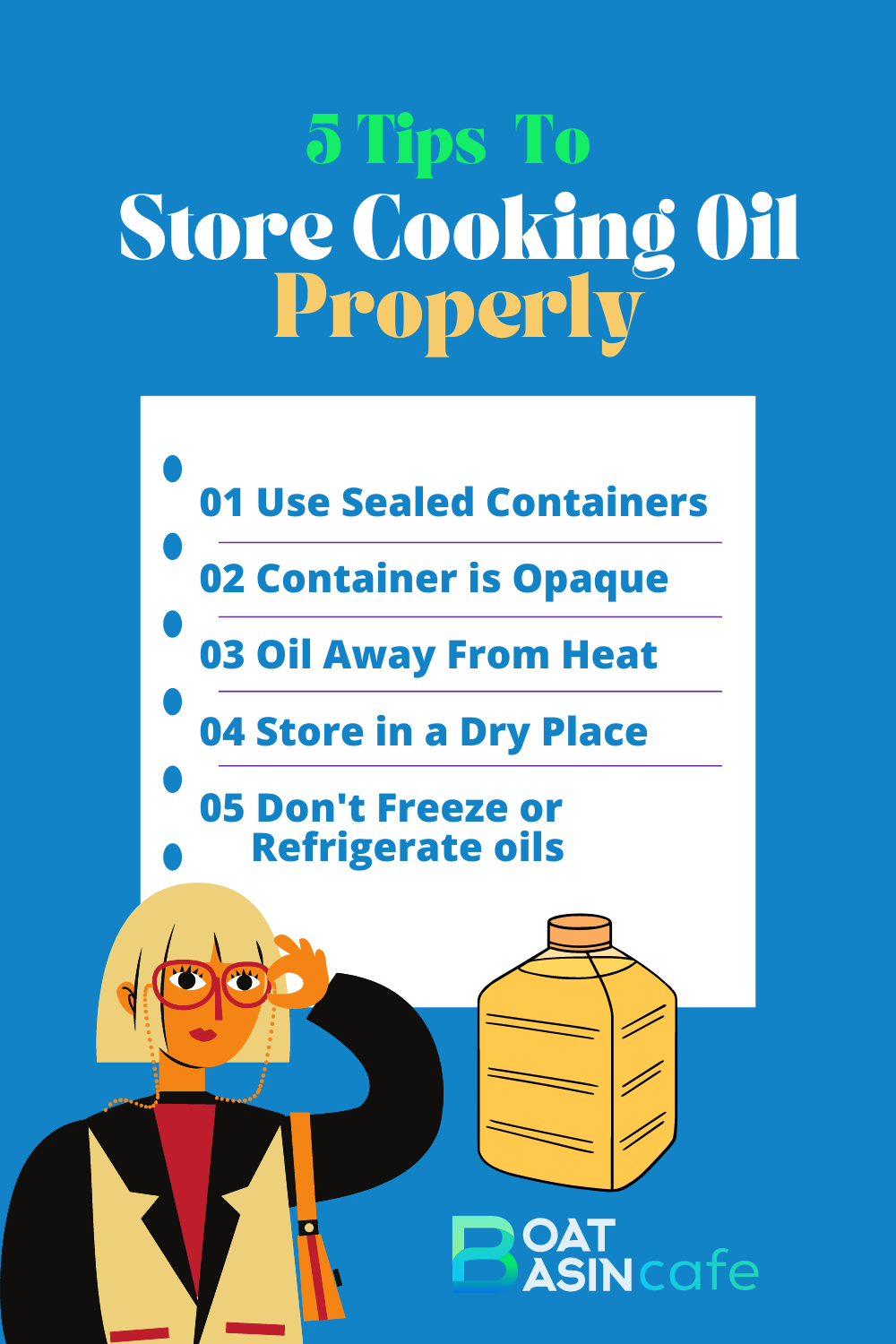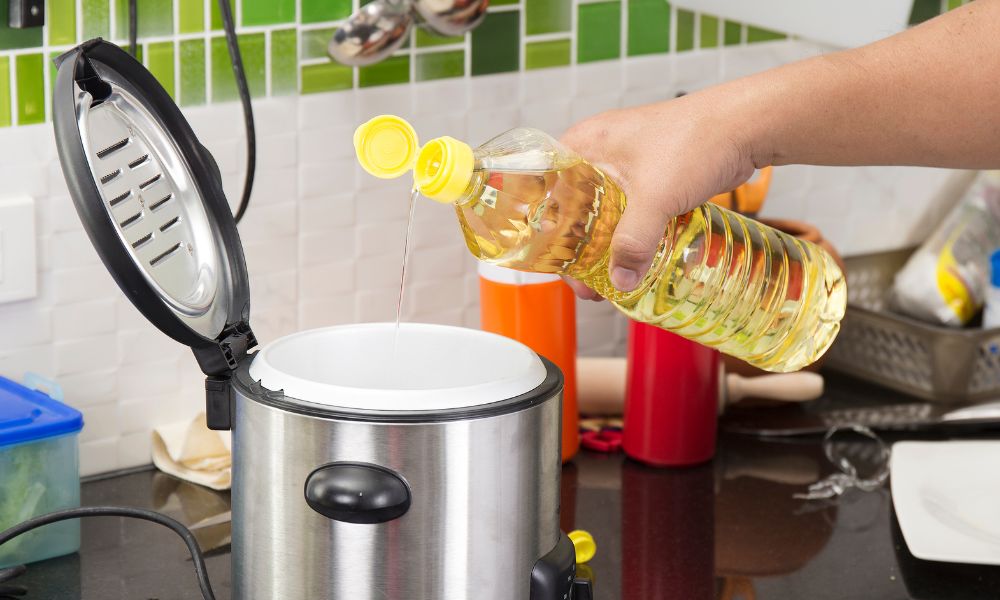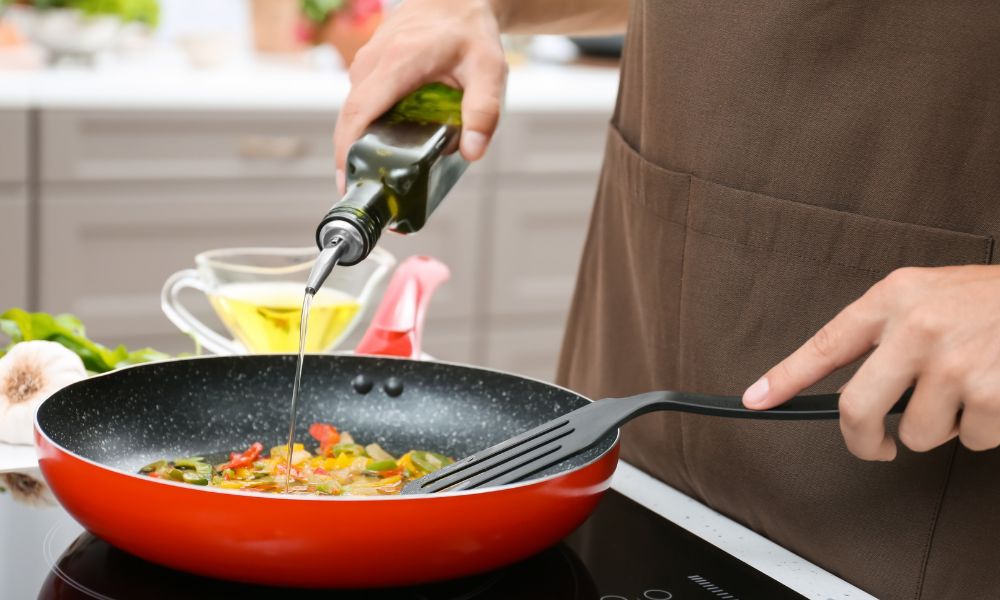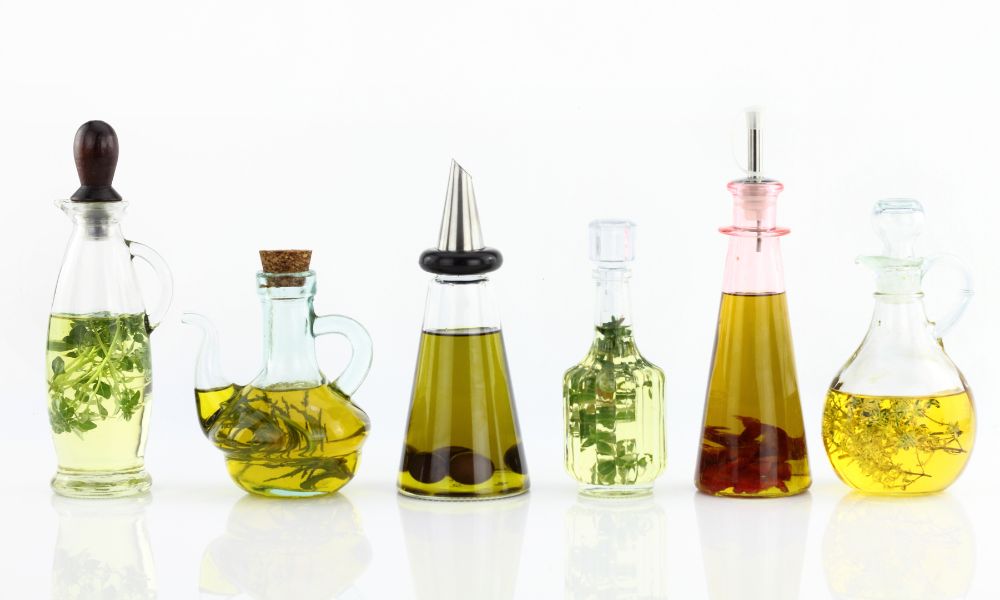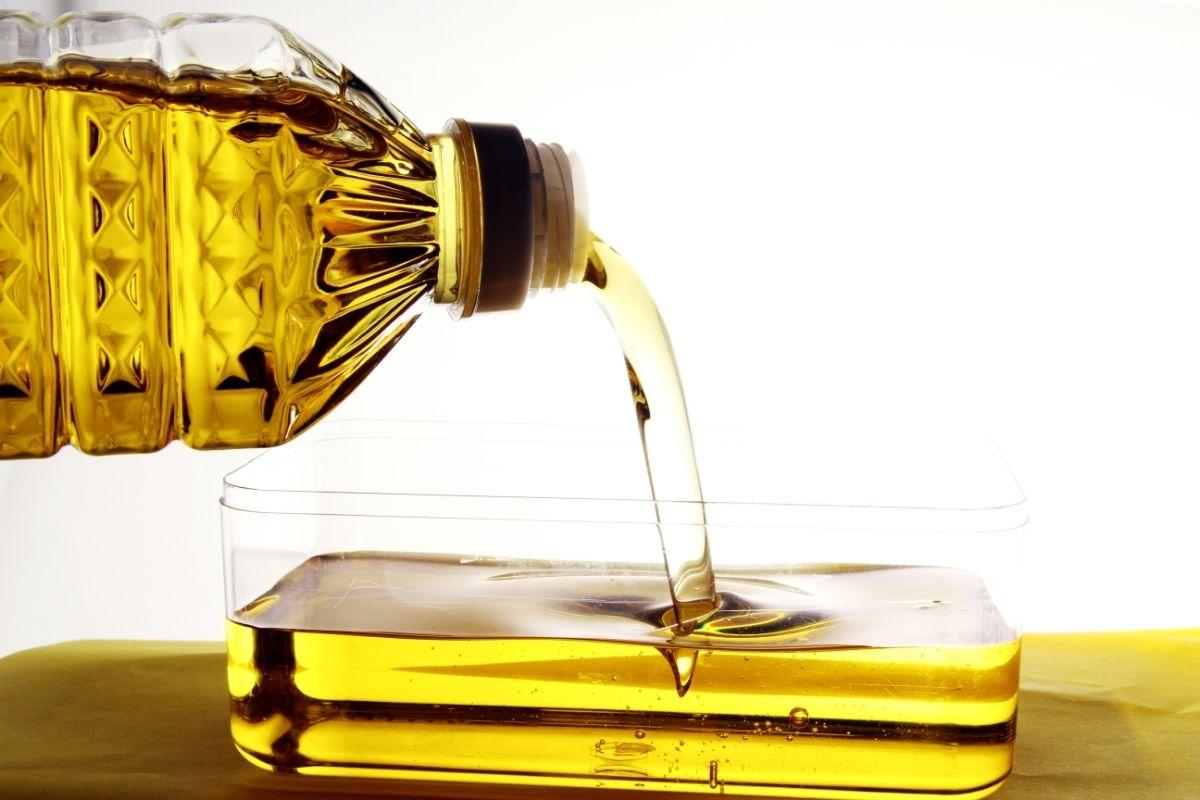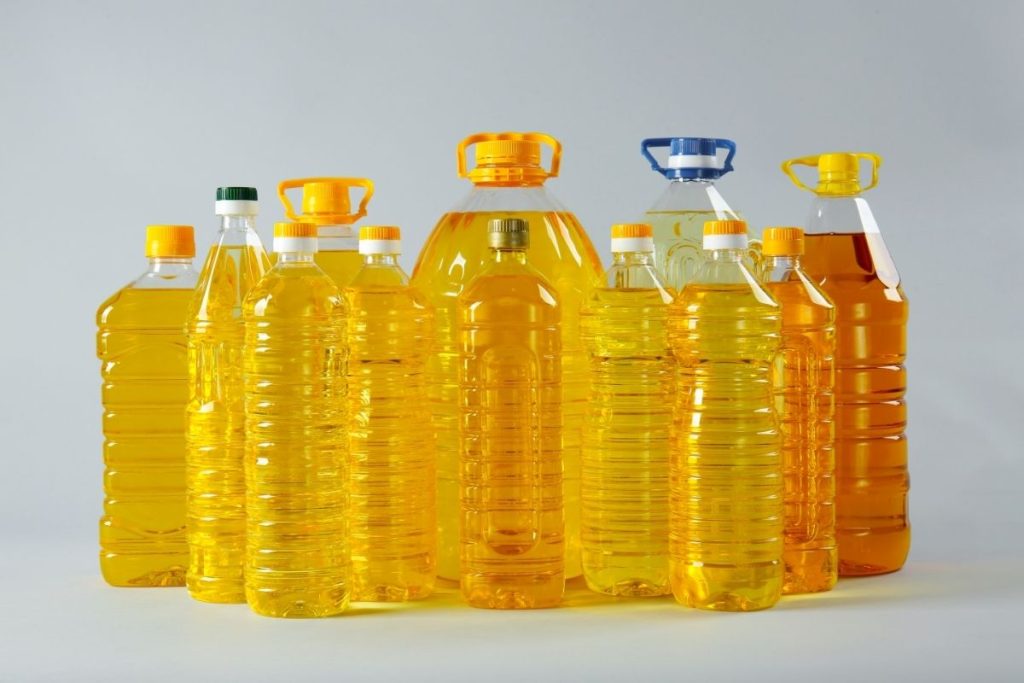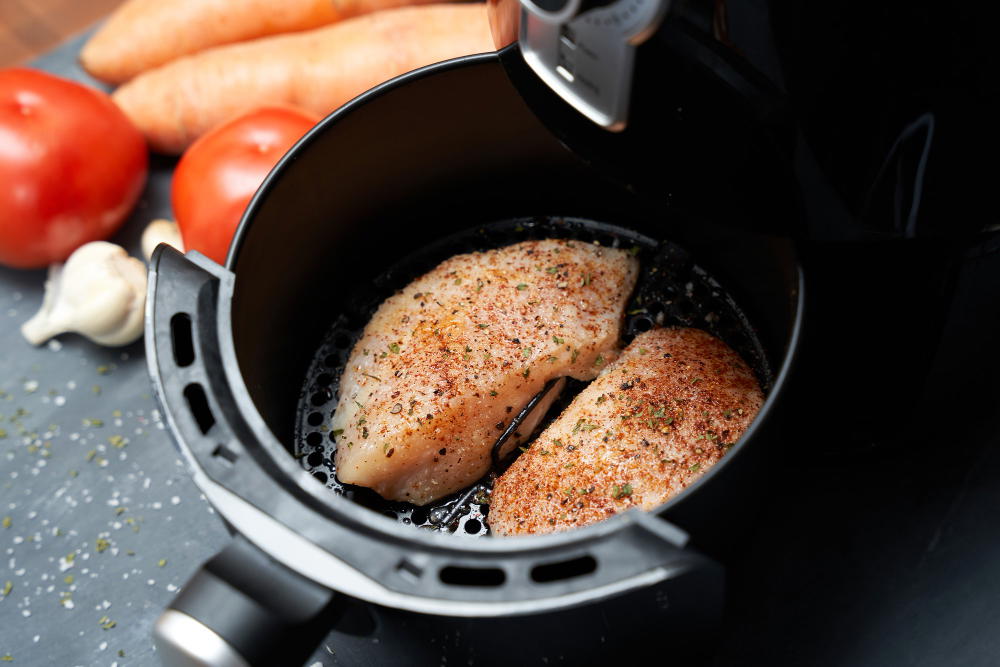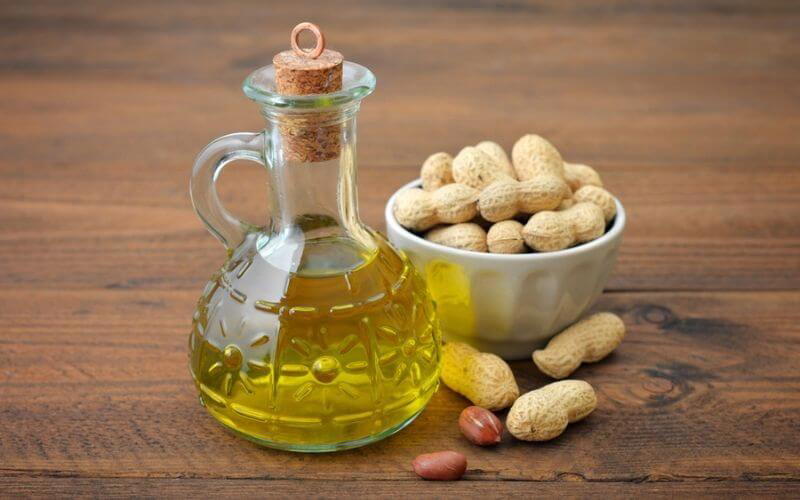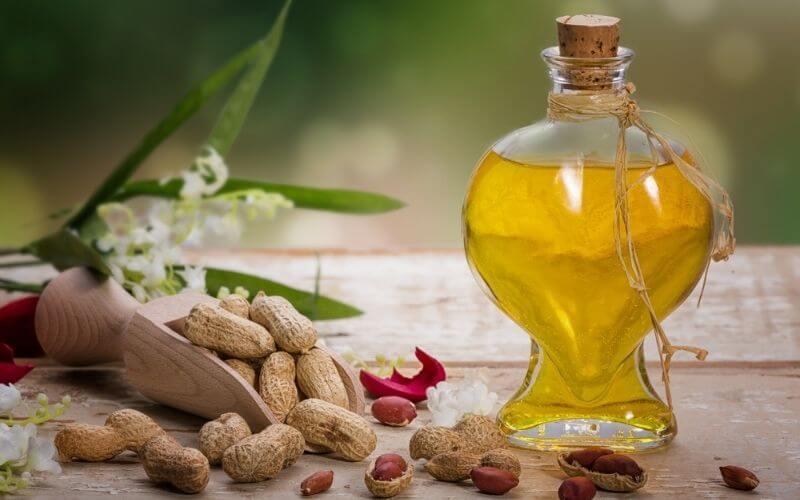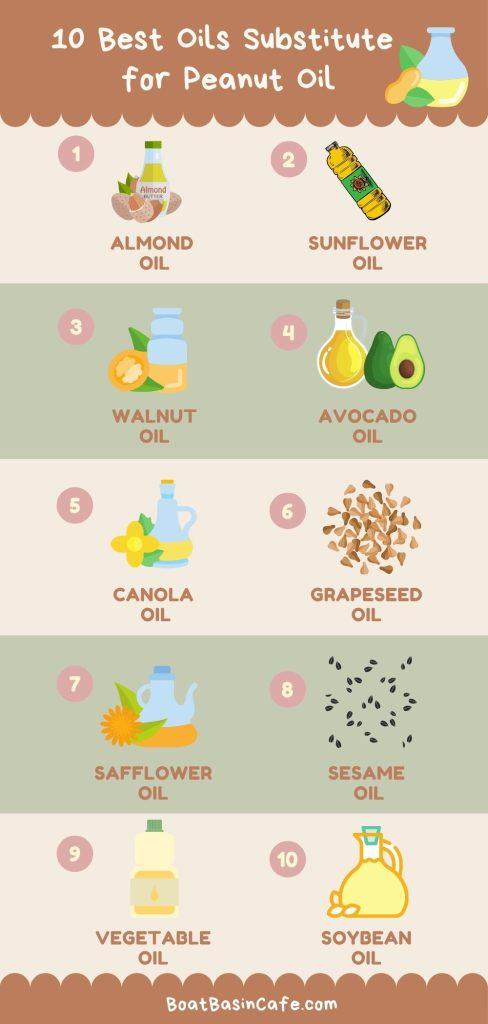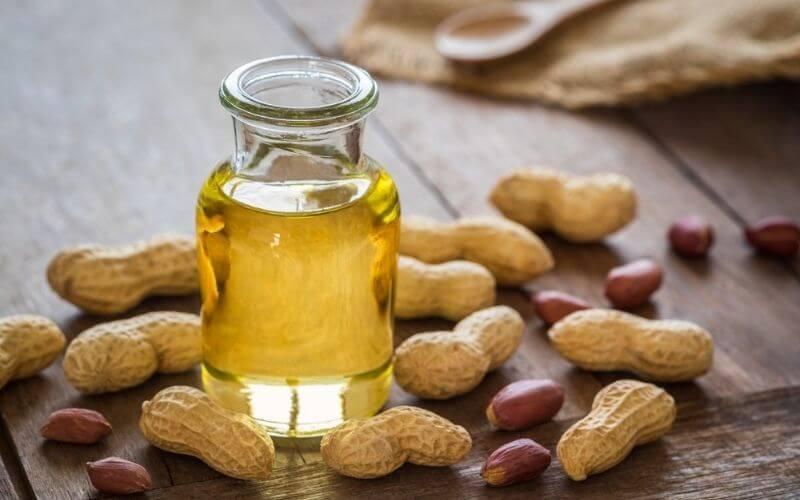Searching for the perfect substitute for vegetable oil? You’re in the right place! Dive into our comprehensive guide and discover healthier alternatives and their varied uses.
| Article Highlights | Details |
|---|---|
| Understanding Vegetable Oil | Vegetable oil, mostly comprising Omega-6, chemicals, and polyunsaturated fatty acids, can affect health adversely despite its culinary benefits. |
| Olive Oil as a substitute | Olive oil is a direct replacement for vegetable oil, providing antioxidants, reducing inflammation, contributing to heart health, and enhancing the lipid profile. |
| Applesauce as a substitute | Applesauce is a lower-calorie, sweet alternative to vegetable oil for baking. Its usage allows for a reduction of sugar in recipes. Opt for organic, unsweetened variants. |
| Coconut Oil as a substitute | Coconut oil is a flavorful, vegan substitute for vegetable oil that can be used for baking and frying. It boosts your body’s ‘good’ cholesterol and can foster weight loss. It imparts a strong flavor. |
| Usage suggestions | Users suggest the use of olive oil for everyday cooking, applesauce for baking sweet treats, and coconut oil for vegan baking and frying. |
| Health benefits of substitutes | Substitutes for vegetable oil offer a mix of nutrition and flavor while providing several health benefits, including disease prevention and weight loss. |
| Exploring alternatives | It’s advisable to experiment and find your personal favorite in vegetable oil alternatives, considering both health benefits and taste. |
Introduction to Vegetable Oil Substitutes
When we think of common ingredients in our kitchens, vegetable oil often takes center stage. Particularly valued for its mildness in flavor that doesn’t overshadow the food’s essence, it’s been a favorite. Especially, when it comes to baking delights like boxed cake mixes. But is it truly the healthiest choice? And if not, what are the best alternatives?
Understanding Vegetable Oil

What is Vegetable Oil?
Vegetable oil is a broad term encompassing all oils derived from plants. But the variant gracing most kitchen shelves usually combines several oils, including corn, palm, and soybean. Post its intense refining process, the residue mainly comprises Omega-6, chemicals, and polyunsaturated fatty acids. Although Omega-6 plays a role in health maintenance, an excess can wreak havoc.
Notably, the dietary inclusion of vegetable oil impacts the Omega-6 and Omega-3 ratio in the body. A surge in Omega-6 has been associated with inflammation and potential health risks. Pregnant individuals should exercise caution, given the potential adverse effects on fetal development. A revealing study in the Journal of Epidemiology pointed towards a correlation between Omega-6 and Coronary Heart Disease. The health implications of the added chemicals in vegetable oil, while significant, is a topic for another day.
Yet, with its undeniable culinary benefits—its ability to fry, bake, and sauté to perfection—one can’t help but wonder: are there equally commendable substitutes? The answer is a resounding yes! However, the key lies in selecting them judiciously.
You may also like: Substitutes for Cream Cheese
Top 10 Substitutes of Vegetable Oil in Cooking

Are you looking to experiment with new substitutes of vegetable oil or prioritize the nutritive content? Delve into our curated list of the top 10 alternatives. Whether you’re baking a cake or whipping up a salad, we have something for every dish.
01. Olive Oil
Best for:
- Dressing
- Sauteing
- Pan frying
Not Recommended for:
- Deep frying
The best substitute for vegetable oil is olive oil. The replacement ratio is 1-for-1. Unlike the one we are swapping it with, it is filled with the goodness of nature.
It is loaded with antioxidants that help us fight off diseases. The oleic acid found in olive oil reduces inflammation. Healthier monounsaturated fats reduce the risk of heart disease and are excellent for your lipid profile.
According to a report by Harvard Health Publishing, it can help reduce LDL in your blood. LDL, as you may know, is the bad cholesterol that we don’t want to exceed its normal level in our body. A handful of studies have shown that it can reduce your blood pressure. Studies also suggest that regular intake lowers the risk of getting a stroke and type 2 diabetes.
A compound found in olive oil literally removes plaques from brain cells, preventing Alzheimer’s disease. It can fight cancer cells as well.
Too good, and true!
From the culinary point of view, it is one of the most versatile of all cooking oils. It comes with a fruity aroma and robust flavor.
It has a smoke point of 210 degrees, meaning, beyond this point, it will lose its nutritive value. So it is the best kept for cooking on low to medium heat.
Its distinct taste makes it ideal for salad dressings. This is not what you would want during baking though. Baking recipes such as cakes, muffins, and brownies require a mild moistening agent that would not add any flavor of its own.
In this case, butter is certainly better. However, many are fine with using olive oil as their baking companion.
You may come across two grades of olive oil- extra virgin and virgin.
Extra virgin olive oil is the first pressed oil with a stronger taste and flavor while virgin olive oil is the second pressed with a milder texture. You don’t want to get fooled by unreliable brands.
Amazon Product Recommendation:
[amazon box=”B0086OZ7X2″]
Pompeian Robust Extra Virgin Olive Oil has a strong, robust flavor profile. Pompeian Organic Extra Virgin Olive Oil is the one if you are looking for something organic.
You can also check out La Tourangelle Organic Extra Virgin Olive Oil and Amazon Fresh Italian Extra Virgin Olive Oil.
02. Applesauce
Best for:
- Baking
Not Recommended for:
- Other forms of cooking
If you are up for cutting calories from your baked pieces of happiness, swap vegetable oil with applesauce. Use it in a 3/4th cup-for-1 cup ratio.
Applesauce is what you need for all sorts of delightful recipes like spice cakes, carrot cakes, chocolate cakes, and quick bread. But there is no doubt that it goes best with muffins. It is deliciously moist with a flavor of its own, but this time, it meddles with the taste of your cake in a good way.
Applesauce contains fewer calories than oils, and if you are using the sweetened form, you can cut down on sugar use, further trimming the calories.
Just make sure that your pack of sweetened applesauce does not contain high fructose corn syrup, in which case, all goes in vain. However, it is better to use the organic, unsweetened form.
Applesauce is another healthy vegetable oil alternative. The American Heart Association (AHA) recommends applesauce and other veggie and fruit purees for reducing the amount of fat in your cakes.
It is a good source of dietary fiber in the form of pectin. Dietary fiber is necessary for good gut health. It also passes through your gut slowly, making you feel full for a longer time and reducing your food craving. It is also loaded with Vitamin C which is essential for growth, development, and repair of all body tissues.
When you’re baking with applesauce, it usually cooks fast. Reducing the baking temperature by 25 degrees and baking time by 5-10 minutes is probably a good idea.
Applesauce will leave your brownies spongier and thinner. Substituting half of your vegetable oil with applesauce and the other half with butter or any other oil could work as well.
Different recipes respond differently to the proportion of applesauce used. If you love baking, this could be the focus of your next experiment.
Amazon Product Recommendation:
[amazon box=”B07C2SY9G9″]
Mott’s No Sugar Added Applesauce and GoGo SqueeZ Applesauce on the Go could be your pick if you choose to go for unsweetened applesauce. Both come as 3.2-ounce packs with 12 portable and squeezable pouches in them. That should be enough for your recipe.
There is also a variety pack by GoGo SqueeZ applesauce that comes with applesauce in three flavors: apple, banana, and strawberry.
GoGo SqueeZ Applesauce on the Go is another unsweetened applesauce brand that comes with 12 squeezable pouches.
03. Coconut Oil
Best for:
- Sauteing
- Frying
- Cooking curries
- Baking
Not Recommended for:
- Everyday consumption in bulk amount
Coconut oil is a popular vegan alternative to butter. Another fact that many of us are not aware of is that it can be a great alternative to vegetable oils as well.
With its light texture, nutty flavor and subtle tropical taste, it certainly stands out from the others. Use it in a 1-for-1 ratio, but make sure it is measured in its molten liquid state.
Coconut oil is a healthy package of vitamins, minerals and a variety of nutrients. Many are scared of it because of its high saturated fat content, but if you compare it with vegetable oil, you will see that it is better.
The unsaturated fatty acids in vegetable oil give rise to free radicals in the body. Free radicals are the opposite of antioxidants and lead to inflammation and disease. Whereas coconut oil is a rich source of antioxidants that help keep the body healthy.
An added bonus is the lauric acid present in coconut oil which is an antibacterial agent. However, according to the Mayo Clinic, coconut oil should be consumed in moderation.
You will find either of the two types of coconut oil: refined and unrefined (virgin). The refined form is great for sautéing and baking. You can add it to your boxed cake mixes as well. The unrefined or virgin form is more suited to frying. Coconut oil works best in raw slices, curries, and cold desserts.
If you are a fan of plant-based diets, coconut oil is your perfect match.
Amazon Product Recommendation:
[amazon box=”B07C2SY9G9″]
[amazon box=”B00NFJPK5S”]
For sauteing and baking, you can use Nutiva Organic Steam Refined Coconut oil. Steam refining the oil renders it neutral so it does not meddle with the flavor profile of your baked goods. Another refined and odorless brand of organic coconut oil is Carrington Farms Organic Coconut Cooking Oil.
If you would like your coconut oil to be refined as well as retain its smell, Premium Pure Refined Organic Coconut Oil could be your brand. You can use it for skin and hair care as well.
For frying, it is better to opt for the unrefined varieties. Viva Naturals Organic Extra Virgin Coconut Oil and Nature’s Way Organic Extra Virgin Coconut Oil are great options.
04. Yogurt
Best for:
- Baking
- Salad dressing
- Marinating meat and poultry
Not Recommended for:
- Frying
Yogurt may sound a bit odd for a vegetable oil substitute, but in the right places, it does the trick.
Odd? Not really.
It is ideal for baking and adds a creamy texture to your cakes. It is a perfect moistening agent for your cakes, brownies and quick bread recipes. Replace half the amount of vegetable oil with 3/4th the amount of yogurt.
The preferred choice of yogurt is the one with a high-fat content as it will supply the recipe with the oil it needs. Yogurt is highly recommended for health junkies as it comes with a fair amount of calcium, proteins and B vitamins.
It also makes your cakes more filling, reducing the chance of overindulgence. It works great with salads. Marinating your meat with yogurt instead of vegetable oil helps tenderize it and also adds a savory flavor to it.
Generally, for marinating and salad dressing, you can use yogurt in a 1-for-1 ratio, but using just the right amount can be tricky. Yogurt used in excess can ruin your dish, so bring out the careful chef in you when you are dealing with it.
Amazon Product Recommendation:
[amazon box=”B003OGKCDC”]
[amazon box=”B01E90U790″]
365 Everyday Value Organic Whole Milk Yogurt is an unsweetened brand of yogurt. It is made from cultured pasteurized organic whole milk and comes with 6 live and active cultures. It is thin which makes it suitable to be a baker’s ingredient but some may find the smell a bit too strong.
Organic Valley Grassmilk Whole Milk Yogurt is another unsweetened whole milk yogurt with a handsome content of Omega-3 and active cultures. It is quite creamy. There are two styles: plain and vanilla.
You can easily make your own yogurt with just a sachet of a yogurt culture starter pack. Original Bulgarian Yogurt Starter Culture Pack comes with 3 sachets of lactic acid based bacteria that have been isolated from natural Bulgarian sources. Follow the simple instructions in the pack and get your own fresh produce of yogurt ready to replace your vegetable oil.
05. Butter
Best for:
Baking:
- Cookies
- Cakes
- Muffins
- Brownies
- Stacked layered cakes
Not Recommended for:
- Bulk intake
Butter may be high in calories, but when it comes to baking, it is certainly better than any processed alternative. Use butter instead of vegetable oil and get crisp, light brown baked goods brimming with flavors.
You can add it to your cake mix. Just remember to melt it before doing so to avoid clumping the dough. The ratio is 1-for-1. Butter will make your cake denser and give it a rich creamy texture.
It is often thought of as unhealthy food as it is high in calories and full of monounsaturated fats. However, did you know that studies have shown that saturated fats from the animal origin will not give you high cholesterol?
A June 2016 review published in PLOS did not find a direct link between butter intake and Cardiovascular diseases or Diabetes. Even then having butter in excess is probably not a good idea. Best to keep it balanced.
Butter has a great vitamin profile. It is a good source of vitamins A, E, and K, all of which are vital for a healthy body.
With a smoke point at 177 degrees, butter doesn’t burn easily when heated and retains much of its nutrients. If you wish to bake crisp and flavored dishes, butter should be your go-to alternative to vegetable oil.
Amazon Product Recommendation:
[amazon box=”B007NLMHG4″]
Red Feather Canned Butter is as natural as butter can get. It is just made of pasteurized cream and salt. There is no added preservative, flavor or anything else. It is surprisingly delicious for a canned butter as well.
Kerrygold Pure Irish Butter is our next pick. It is good quality butter, but you may find it semi-hardened or softened when you get your hands on one.
06. Avocado Oil
Best for:
- Salads and Salad dressings
- Marinades
- Grilling
- Sauces
- Stir-frying
- Sauteing
Not Recommended for:
- Baking
Avocado is the priciest alternative on our list but it really is worth it. It is unrefined oil pressed from the fruit of an avocado tree.
The oil has a silky texture and a grassy flavor, but it is mild enough for you to not even notice the switch from vegetable oil. Swap it in a 1-for-1 ratio.
Having a smoke point of 271 degrees makes it suitable for frying, roasting, and grilling. But since it is a tad expensive, you can just use it as a cold or finishing oil. There are mixed opinions regarding its use for baking.
It is full of good fatty acids and vitamin E. Lutein found in avocado oil helps keep your eyes healthy and lowers the risk of cataract and macular degeneration.
It aids the body to absorb certain nutrients as well. It is particularly helpful for the ones suffering from arthritis as it reduces symptoms of the disease.
Amazon Product Recommendation:
[amazon box=”B07R3P9G2Q”]
[amazon box=”B006K3RCPC”]
Avocado oil is hard to obtain; you may not find it in your local superstore. It is available in health food stores and online.
La Tourangelle Avocado Oil adds the distinct grassy flavor of avocado oil to your meal. If you want your meal to carry the aroma of your oil, this one is your brand.
Whereas Better Body Foods 100% Pure Avocado Oil and Wickedly Prime 100% Pure Avocado Oil are brands with a mild flavor profile. Pick these if you do not want your recipe to tell which oil you use.
07. Canola Oil
Best for:
- Baking brownies
- Grilling
Not Recommended for:
- Bulk intake
Whether you have friends over for a barbeque or you are just looking for a delightful evening with a brownie, canola oil will save your day if you are low on vegetable oil. Most vegetable oils available in the market predominantly contain canola oil, so the nutrition profile is similar.
Even then canola oil on its own is better. Replace your vegetable oil with canola oil in a 1-for-1 ratio.
Canola oil comes from rapeseed plants. It has the lowest proportion of saturated fatty acids among all edible oils out there. It also has a decent content of good fats including Omega-3.
It is flavorless, therefore does not interfere with the taste of your baked goods. A smoke point of 204 degrees makes it an excellent candidate for use during grilling.
Canola oil is safe for your wallet as well. While purchasing it, keep in mind to avoid the highly processed ones which don’t have much nutrition left in them. You can opt for organic canola oil instead.
Amazon Product Recommendation:
[amazon box=”B000QV1PR0″]
Spectrum Organic Canola Oil and 365 Everyday Value Organic Canola Oil are a couple of Organic Canola Oil brands that could serve as your daily cooking companion.
You can also use Crisco Pure Canola Oil. This is not branded as organic but is devoid of additives and preservatives.
08. Sunflower Oil
Best for:
- Frying
- Baking
- Roasting
Not Recommended for:
- Bulk intake
Just like canola oil, sunflower oil is a major ingredient of vegetable oil as well but is better taken on its own. It is neutral in taste, so it’s suitable for all sorts of recipes.
With a smoke point of 230 degrees, it can preserve its nutrition at high heat. It can be your top pick for grilling fish or steaks. It does not meddle with cakes, so feel free to make it your baking companion.
Pressed from seeds of sunflowers, this oil is stuffed with good nutrients. It contains choline and phenolic acids and is rich in Vitamin E.
What is more interesting? It is free of trans fats. Yes, you read it right- zero trans fats.
Research suggests that sunflower oil may play a role in reducing LDL- the ‘bad’ cholesterol from the body, giving us a fairly good reason to substitute vegetable oil with it. The only downside of sunflower oil is its high Omega-6 content, which we know by now, can result in inflammation. It may help to avoid taking too much of it.
Amazon Product Recommendation:
[amazon box=”B07CJ1R2MZ”]
Baja Precious High Oleic Sunflower Oil, Healthy Harvest Non-GMO Sunflower Oil and Safya 100% Pure Sunflower Oil could be your regular kitchen oils. However Baja Precious High Oleic Sunflower Oil is a bit rancid compared to the other two. Apart from this, the performance is similar. The organic counterpart could be Spectrum naturals.
09. Flaxseed Oil
Best for:
- Salad dressings
- Marinades
Not Recommended for:
- Overheating
Looking for a good-for-gut alternative for vegetable oil? Pick flaxseed.
Pressed from ground seeds of the flax plant, this oil also goes by the name linseed oil. It has a rich load of soluble fibers that is great for your gut.
Its laxative effect protects from constipation. Moreover, it contains alpha-linoleic acid (ALA) that turns into EPA and DHA, active forms of Omega-3 fats, inside the body.
Different studies have shown the positive impacts of taking flaxseed oil. It has been found that consuming flaxseed oil increases the elasticity of arteries and helps reduce blood pressure.
It is great for the skin. A study conducted on a group of women supplemented flaxseed oil in their diet for 12 weeks.
The result? All experienced increased skin smoothness and hydration and decreased irritation. There is also reason to believe that it may play a role in reducing inflammation and cancer cell growth.
Use it over salad dressings or sprinkle over your grilled vegetable, sit back and enjoy a healthy meal. However, there is a catch. Flaxseed oil is not heat-stable, hence you cannot cook it on high heat.
Amazon Product Recommendation:
[amazon box=”B002VLZ830″]
Barlean’s Fresh Organic Flax Oil is organic and unrefined. It comes in a container that protects it from external air and light. Puritan’s Pride Organic Flaxseed Oil has a milder taste and flavor.
10. Fruits: Mashed, Puree, Dried!
Best for:
- Baking
Not Recommended for:
- Cooking
Forget oil altogether. Swapping oils with fruits wraps up our top 10 alternatives for vegetable oil in 2020. You can use a variety of fruits in a variety of forms to substitute vegetable oil in baking.
Fruit puree decreases fat in baked food, all the while preventing them from drying and crumbling apart. As fruit puree is naturally sweet, you can even cut down on your sugar use.
Use banana, pumpkin, sweet potato, pears or any other fruit you love and bake something healthy with a twist of flavor. Take note that the stronger the taste of the fruit, the more it will add to the taste of your cake.
Fruit puree works best with baked desserts, zucchini loaves, onion buns, and spice bread. Use it in a 1-for-1 cup ratio.
But if you have your mindset on something chocolaty, use prunes or pureed dried plums. They will leave your brownie moist and fudgy, with 25% less sugar and loaded with vitamins A and K.
Using the right proportion is the tricky part. You may need several attempts to master the technique of using fruits in place of your regular vegetable oil. But if you are up for a dash of thrill in your baking, then give it a go and have fun!
Amazon Product Recommendation:
[amazon box=”B076BDGBN1″]
Natural Fruit Puree by Primor offers a range of pureed fruits such as passion fruit and guanabana (soursop). Jungle Pulp Guava Puree Mix Pasteurized Fruit, as the name suggests, provides you with pureed guava. However, you can choose to mash your own fruits anytime.
What Users are Saying About Vegetable Oil Substitutes
Emma, a Nutritionist:
“Over the years, I’ve come to realize the value of substituting vegetable oil. I primarily use olive oil for its cardiovascular benefits. The mild taste and rich antioxidants make it a perfect option for many dishes.”
John, a Culinary Expert:
“The subtle sweetness applesauce adds to baked goods is unparalleled. A heart-healthy choice, it’s indispensable in my kitchen. Plus, I love its texture in muffins and pancakes.”
Lisa, a Vegan Blogger:
“Coconut oil is my go-to for baking and frying. The tropical scent it imparts to dishes is heavenly. Not just a substitute, it elevates the flavor profile.”
Frequently Asked Questions (FAQ):
Here are some of the most frequently asked queries by those trying to replace vegetable oil in their recipes.
What Can I Substitute For Vegetable Oil?
You have a wide array of vegetable oil alternatives to choose from. The trick is to pick the right one depending on your recipe.
Here are the top vegetable oil substitutes and how you can use them-
Olive Oil: Dressing, Sauteing, Pan-frying.
Applesauce: Baking muffins, carrot cakes, spice cakes, quick bread recipes.
Coconut Oil: Sauteing, Frying, Cooking curries, Baking.
Yogurt: Baking, Salad dressing, Marinating meat, and poultry.
Butter: Baking cookies, cakes, muffins, brownies, stacked layer cakes.
Avocado oil: Salad dressings, Marinades, Grilling, Sauces, Stir-frying, Sauteing
Canola Oil: Baking brownies, Grilling.
Sunflower Oil: Frying, Baking, Roasting.
Flaxseed Oil: Salad dressings, Marinades.
Mashed, Puree, and Dried Fruits: Baking.
Can I Substitute Olive Oil For Vegetable Oil?
Definitely: Olive oil is one of the healthiest substitutes of vegetable oil. Use it in a 1-for-1 ratio. It is best for cooking at low to medium heat and great for dressing, sautéing and pan-frying.
It’s loaded with nutrients that help us fight off diseases and reduce inflammation. It decreases the risk of heart disease, reduces blood pressure and is excellent for lipid profile.
Regular intake lowers your risk of getting a stroke and type 2 diabetes and Alzheimer’s disease. It can fight cancer cells as well.
Can I Substitute Canola Oil For Vegetable Oil?
Yes, you can.
Vegetable oil is easily replaceable with canola oil, as most vegetable oil preparations contain a large proportion of canola oil. But canola oil on its own is better than your regular vegetable oil any day. Use it in a 1-for-1 ratio for baking brownies and grilling.
It has the lowest portion of saturated fats and a decent portion of good fats including Omega-3. It is flavorless, ergo good for baking; retains nutrients at high temperature and ergo good for grilling.
Can I Substitute Coconut Oil For Vegetable Oil?
Sure. Coconut oil is an ideal alternative to vegetable oil if you are aiming for sautéing, frying, cooking curries or are planning to add it to your raw slices and cold desserts.
It stands out with its light texture, nutty flavor, and subtle tropical taste. Use it in a molten liquid state in a 1-for-1 ratio.
It is packed with a variety of vitamins, minerals, and nutrients. It is a great source of antioxidants that help keep your body healthy.
There are concerns about its high saturated fat content though. Even then it is better than vegetable oil in terms of nutrition. However, Mayo Clinic recommends that it be taken in moderate amounts.
What Are The Substitutes For Vegetable Oil In Baking?
The best substitutes for vegetable oil in cakes are-
Applesauce and Fruit Puree: Applesauce and other fruit puree are best for baking muffins, carrot cakes, spice cakes, quick bread recipes. Being naturally sweet, these will help you cut down sugar usage. Use it in a 3/4th cup-to-1 cup ratio.
Yogurt: Yogurt is best for cakes, brownies, and quick bread recipes. Use it in a 1-for-1 ratio or formulate your own perfect combination.
Butter: Butter is great for cookies, cakes, muffins, brownies, and stacked layered cakes. Use it in a 1-for-1 ratio.
Coconut Oil: Great for baking, but some may not prefer the nutty, tropical flavor that it may add to baked food. The proportion should be 1-for-1 with your coconut oil in the molten liquid state.
Canola and Sunflower Oil: As these are major ingredients of vegetable oil, you won’t notice the change if you swap vegetable oil with any of these in baking. Use in a 1-for1 ratio.
What Can I Substitute For Vegetable Oil In Brownies?
You can substitute the following ingredients to make brownies-
Butter: Butter will make brownie dense and fill it with a creamy texture. Replace vegetable oil with melted butter in the ratio 1-for-1.
Canola Oil: Canola oil is a major ingredient of vegetable oil, so when you swap the two, you hardly notice any difference in the brownies. Swap the oils in a 1-for-1 ratio.
Pureed, Dried Plums: Replace vegetable oil with pureed, dried plums. They will leave your brownie moist and fudgy with 25% less sugar and loaded with vitamins A and K.
Yogurt: Yogurt will give baked food a creamy texture. It is great for brownies. Use it in a 1-for-1 ratio or formulate your own perfect combination.
What Are The Substitutes For Vegetable Oil In Waffles?
You can use these three ‘C’s to replace vegetable oil in waffles-
Coconut Oil: Use mild, virgin coconut oil in your waffle for a hint of coconut. You will need the same amount as vegetable oil.
Corn Oil: Corn oil works just great for waffles. Just apply the 1:1 ratio.
Canola Oil: Being a major constituent of vegetable oil, canola oil works perfectly anywhere. It has the added advantage of being a healthier and a wallet-friendly choice. Again, use the same amount as vegetable oil and enjoy your breakfast.
What Are The Substitutes For Vegetable Oil In Pancakes?
These are the alternatives you can use in pancakes-
Grapeseed Oil: The light flavor of grapeseed oil makes it a great oil substitute for vegetable oil in pancake recipes. This oil is super nutritious as well!
Milk, Yogurt and Tofu: Replace vegetable oil with any of these in a 1-for-1 ratio in pancakes. Yogurt may alter the taste a little bit so use fruit-flavored yogurt instead.
Applesauce: Use unsweetened applesauce instead of vegetable oil. Applesauce does not have a strong flavor but it may add a refreshing fruity touch to pancakes.
What Do I Use To Substitute Vegetable Oil For Frying?
For frying, these are your options-
Olive Oil: Pan-frying
Coconut Oil: Pan-frying, deep-frying
Avocado Oil: Stir-frying and sautéing
Sunflower Oil: Pan-frying, deep-frying
What Can I Use To Replace Vegetable Oil In Muffins?
Do you want to make muffins? Here are the replacements for vegetable oil-
Applesauce: The best vegetable oil alternative for muffins is applesauce. It is deliciously moist with a flavor of its own. Swap vegetable oil with applesauce in a 3/4th cup-for-1 cup ratio, then reduce your baking temperature by 25 degrees and baking time by 5-10 minutes.
Butter: Butter is another go-to alternative of vegetable oil for baking muffins. Use it in a 1-for-1 ratio and make muffins brim with a rich aroma.
Mashed, Puree and Dried Fruits: Use banana, pumpkin, sweet potato, pears or any other fruit you love and bake a healthy muffin with a twist of flavor. Like applesauce, you can either use a 3/4th cup-to-1 cup ratio or formulate your own combination.
What Are The Alternatives To Vegetable Oil For Cornbread?
Finally, the alternatives of veggie oil for cornbread-
Olive Oil: When food teacher Faith Willinger was interviewed for a 2003 ‘Boston Globe’ article, she recommended using olive oil in cornbread recipe. According to Faith, olive oil made the crust of her cornbread crispy while giving it a deeper and more complex flavor.
Peanut Oil: If you want to add a nutty undertone to your cornbread, simply swap your vegetable oil with peanut oil and enjoy a new taste in your cornbread.
Butter: Butter is a better choice for any sort of bread recipe including cornbread. The interchange with vegetable oil should be in a 1-for-1 ratio. Make sure you melt your butter before using it.
Canola Oil: Most vegetable oil preparations contain a large proportion of canola oil. However, canola oil on its own is better than your regular vegetable oil.
It has the lowest amount of saturated fats and a decent portion of good fats, including Omega-3. It is flavorless and good for baking; retains nutrients at high temperature and good for grilling.
Conclusion: The Way Forward With Vegetable Oil Alternatives
In the dynamic realm of culinary art, adaptation is key. While vegetable oil is a time-honored choice, the health benefits of its substitutes are immense. As more individuals prioritize health, these alternatives offer a harmonious blend of nutrition and flavor. By choosing judiciously, you can enhance both taste and health. Stay curious, experiment, and discover your favorite vegetable oil alternative. Your body and taste buds will thank you!
For more details on the intricacies of vegetable oils, especially in baking, don’t forget to explore our in-depth guide on how long does vegetable oil last once opened. We are here to ensure you always make the best culinary decisions. Happy cooking!
